Jun 20, 2022
by Sue Carter
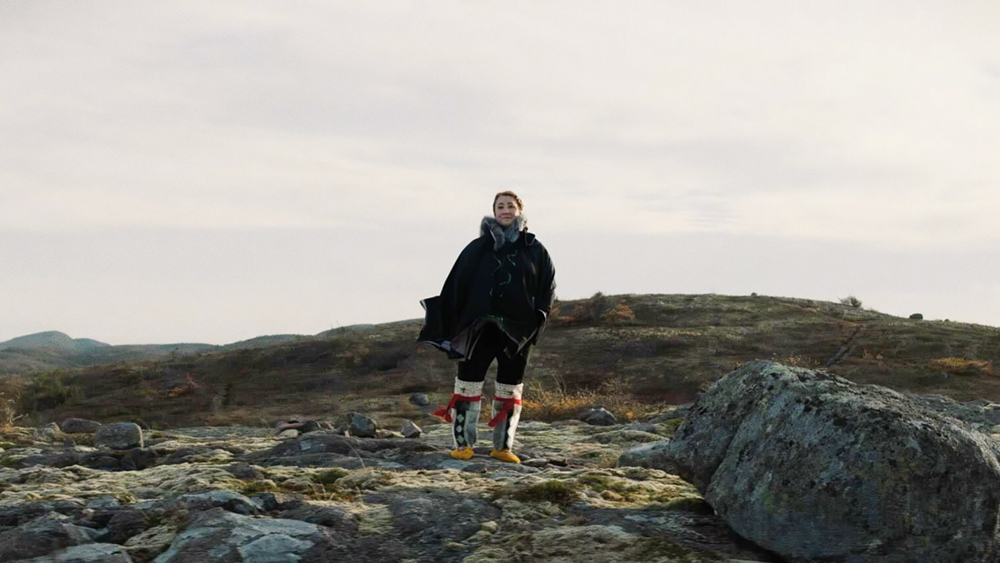
Music can transport you to another time and place, but it’s not often that someone reaches back into the past and turns the old into something new. Soprano Deantha Edmunds has dedicated her career to using her bright voice and Labrador traditions to draw new audiences to the centuries-old sound of opera.
In April 1742, German composer George Frideric Handel premiered his choral masterpiece,Messiah, to a modest audience gathered at a Dublin music hall. Tracing the life of Jesus Christ through passages from the Bible, the emotional range of the oratorio’s musical movements, from grief to exaltation, secured the composer’s reputation as a Baroque mega-star.
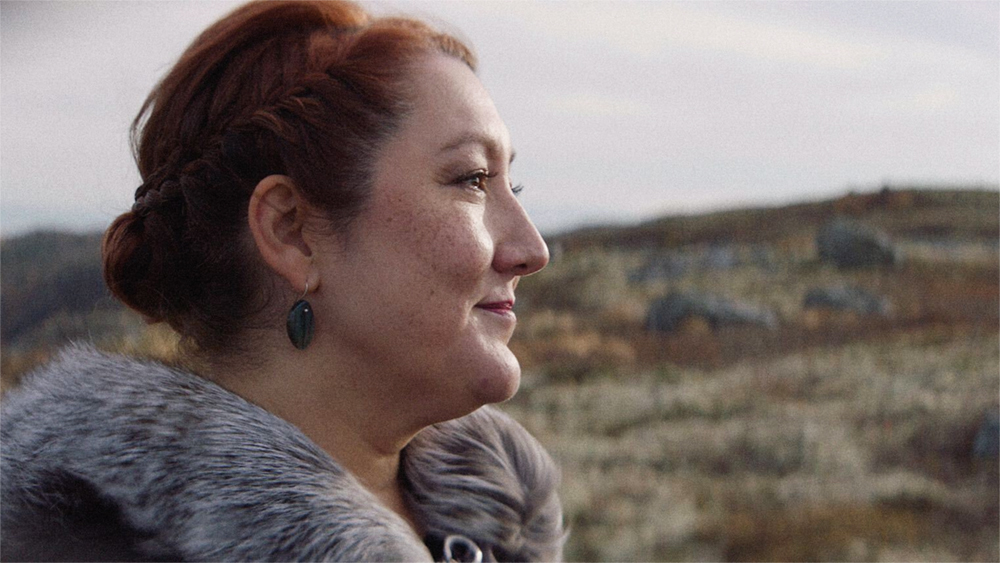
Following Handel’s death in 1759, several new arrangements of Messiah were produced for much larger orchestras and choirs—the bigger, the better was the trend of the day—though the more intimate original version is still performed today.
One of the most unique contemporary adaptations is Against the Grain Theatre’s 2020 streamed video performance, Messiah/Complex, featuring 12 soloists and four choirs, representing every province and territory across Canada, singing in Arabic, Dene, English, French, Inuktitut, Inuttitut and Southern Tutchone, accompanied by the Toronto Symphony Orchestra. The recorded digital album of the performance received a 2022 Juno Award nomination for Classical Album of the Year (Large Ensemble).
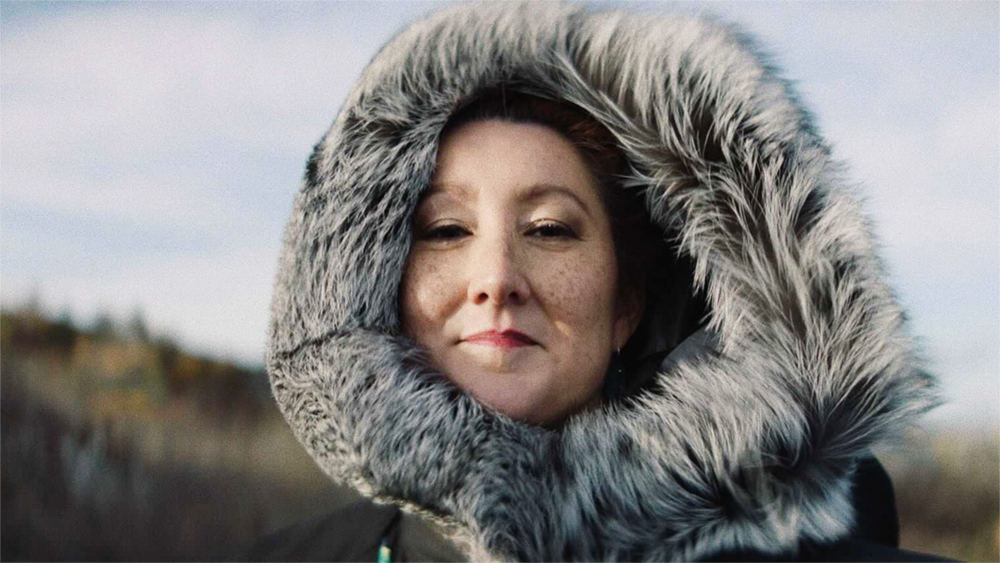
Co-directed by Inuvialuk, Cree and Dene writer and actor (and Inuit Art Foundation board member) Reneltta Arluk, the ambitious cross-country film features performances by two Inuk singers, Looee Arreak from Panniqtuuq (Pangnirtung), NU, and soprano Deantha Edmunds, representing Newfoundland and Labrador. Despite the fact that Messiah/Complex was created under strict COVID-19 restrictions, with a complex master plan for recording and videography to ensure participant safety, the final performance feels timeless.
In the video, Edmunds stands on the cliffs of Petty Harbour, a small fishing village just south of her home in St. John’s, NL. Rough Atlantic waves break over the craggy rocks, until the camera focuses on Edmunds, bathed in sunlight. She is wearing a grey amauti, the wind haloing the fur hood around her face. As Edmunds begins to sing the aria “Kuvianattuksovut Itigangit” (“How Beautiful are the Feet”) in Inuttitut, there is a smile on her face, an air of serene confidence about her. Her voice embodies the natural beauty of the landscape—there are close-ups of her walking in sealskin boots through the lichen, mirroring the song’s words—with an effortlessness that comes from natural talent supported by years of training.
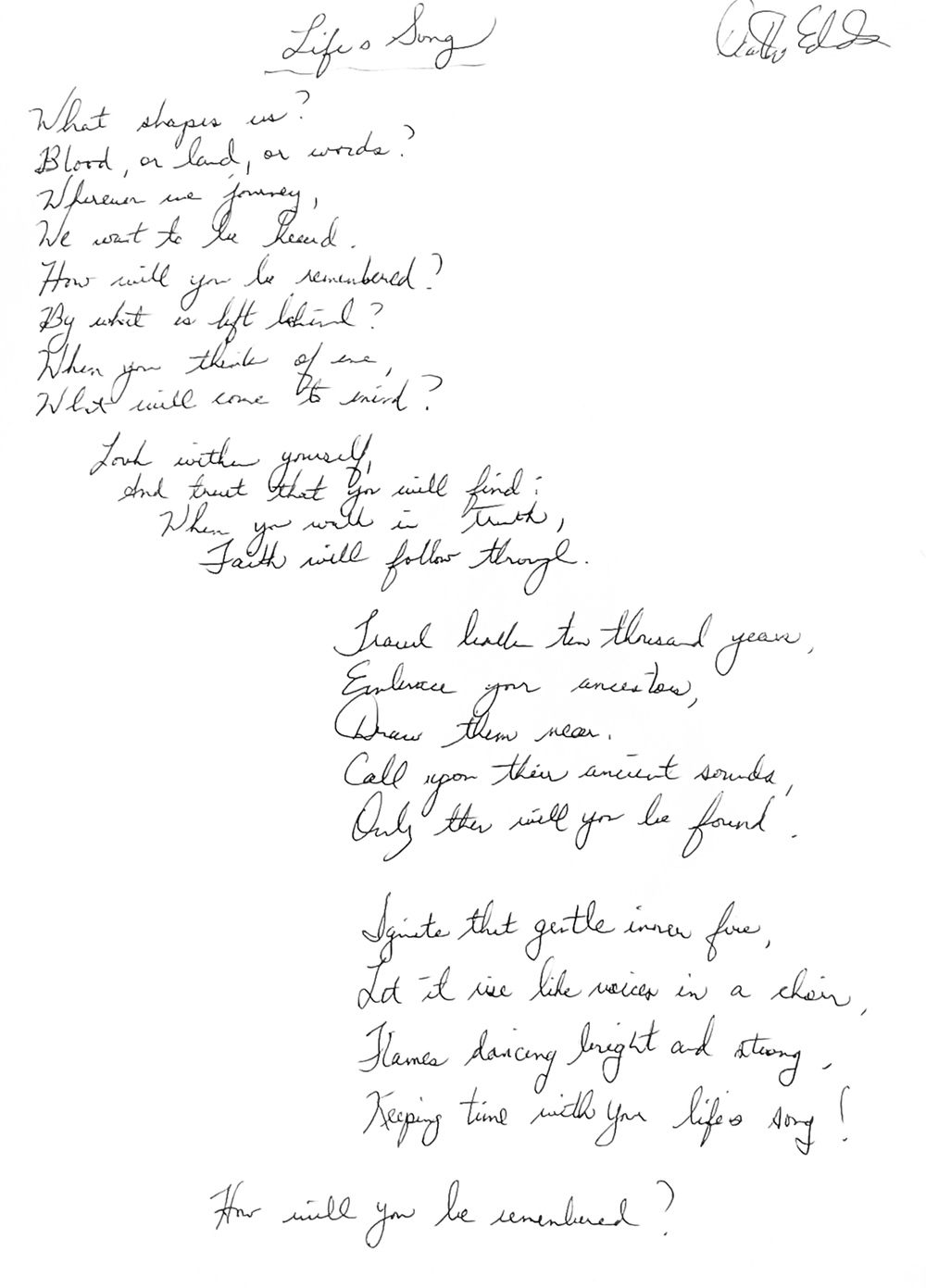
“It’s a piece that I’ve always loved singing. I think it’s one of the most beautiful things ever written,” says Edmunds. [1]
Although originally composed for Easter, Messiah is now a Christmas mainstay, as much a part of the season as Santa Claus. It’s been a highlight of Western holiday repertoires, for both amateur and professional choirs, for centuries. Even those whose classical-music knowledge is limited to old Bugs Bunny cartoons are probably acquainted with the “Hallelujah” chorus.
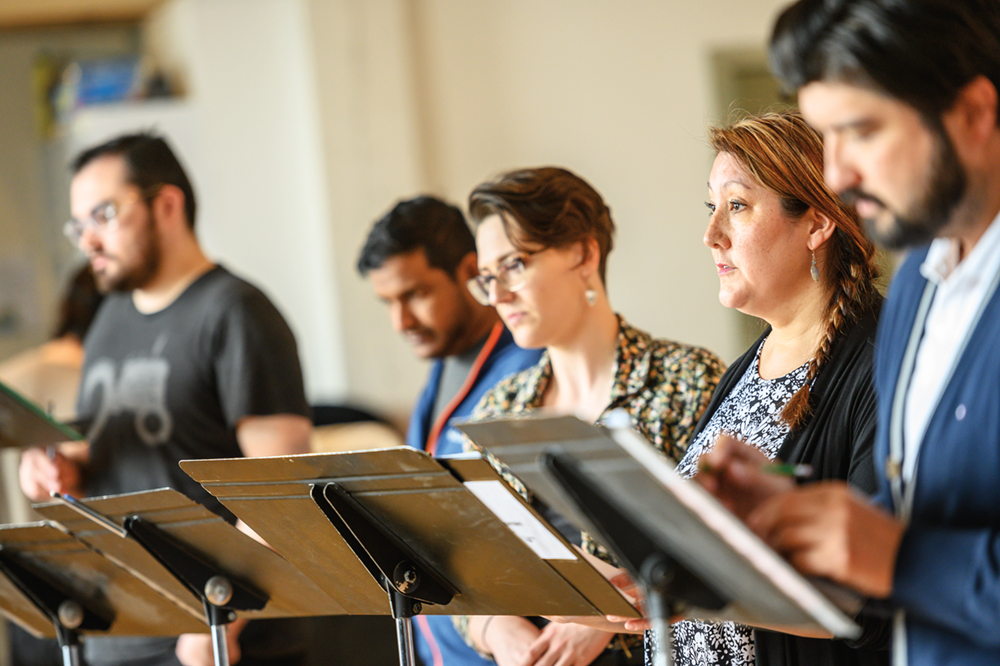
After singing the aria in English for decades, Edmunds found that she had to adapt some of the familiar rhythms to accommodate the Inuttitut translation, “But it felt so good to breathe new life into it.”
As Inuit and other Indigenous artists work to decolonize their respective disciplines, classical music brings unique challenges. It’s rare to hear Handel or Mozart out in the world in grocery stores or gyms, the same way you do pop music (though there are classical TikTokers who regularly get hundreds of thousands of likes). And it’s hard to break the prevailing attitude that classical music is elitist and for White audiences only, a belief that Edmunds is striving to change.
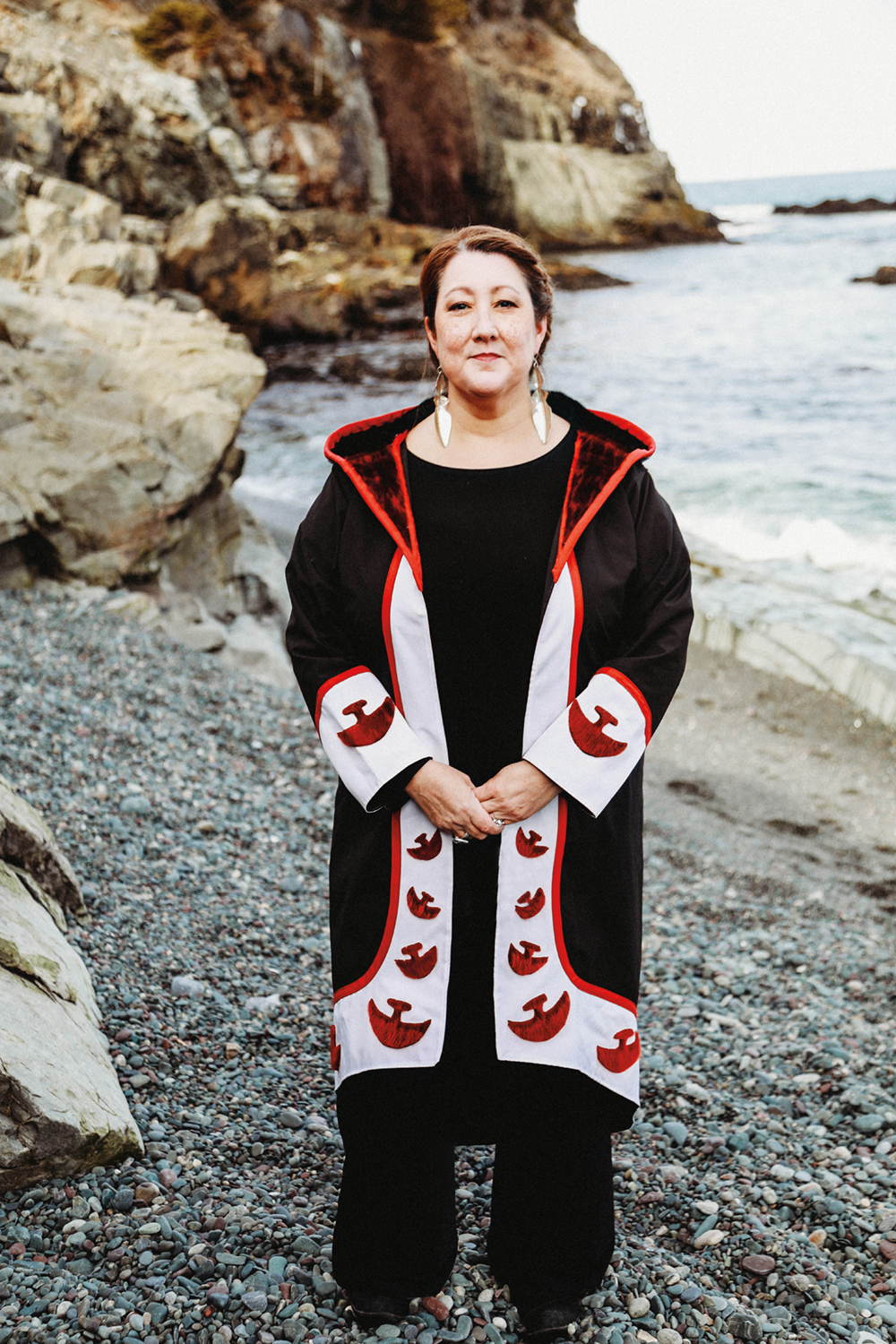
“We’re trying to decolonize the music world so that this music is not only accessible, but appreciated by people who live all over, not just in major cities or who move in prestigious circles,” says Edmunds. “I really want people of all walks of life and listeners of all different styles of music to check out the music that I’m doing, because it is something different.”
Chances are if you’ve seen Edmunds’ name, it’s appended with the title “Canada’s first Inuk classical singer.” One might think that comes with internal pressure, or perhaps a sense of isolation, but it’s been a natural calling since she was 12 years old.
Born in Corner Brook, NL, into a musical family, Edmunds’ late father, Albert—an Inuk from Hopedale, Nunatsiavut, NL—was a professional civil engineer who played the guitar and could figure out any instrument placed in front of him. Edmunds and her siblings all took piano lessons, but ultimately she found her creative home singing.

Every Christmas Eve, Albert would lead the family in traditional carols such as “Silent Night” and “Oh, Christmas Tree” in Inuttitut, German and English, which is how he learned them as a child. It’s a tradition Edmunds carries on with her own family.
“It’s something I’m proud to now be able to do in my own repertoire. And I’ve taught it to my daughter as well,” she says. “These pieces of music that have been passed down for generations are so special to me that it’s hard to put into words.”
For years, Edmunds put most of her energy toward teaching, something which she still does and loves. But then she encountered the work of Dr. Tom Gordon, a professor emeritus of Musicology at Memorial University in St. John’s. Gordon has been extensively studying and preserving the tradition of Western music in coastal Labrador Inuit communities.
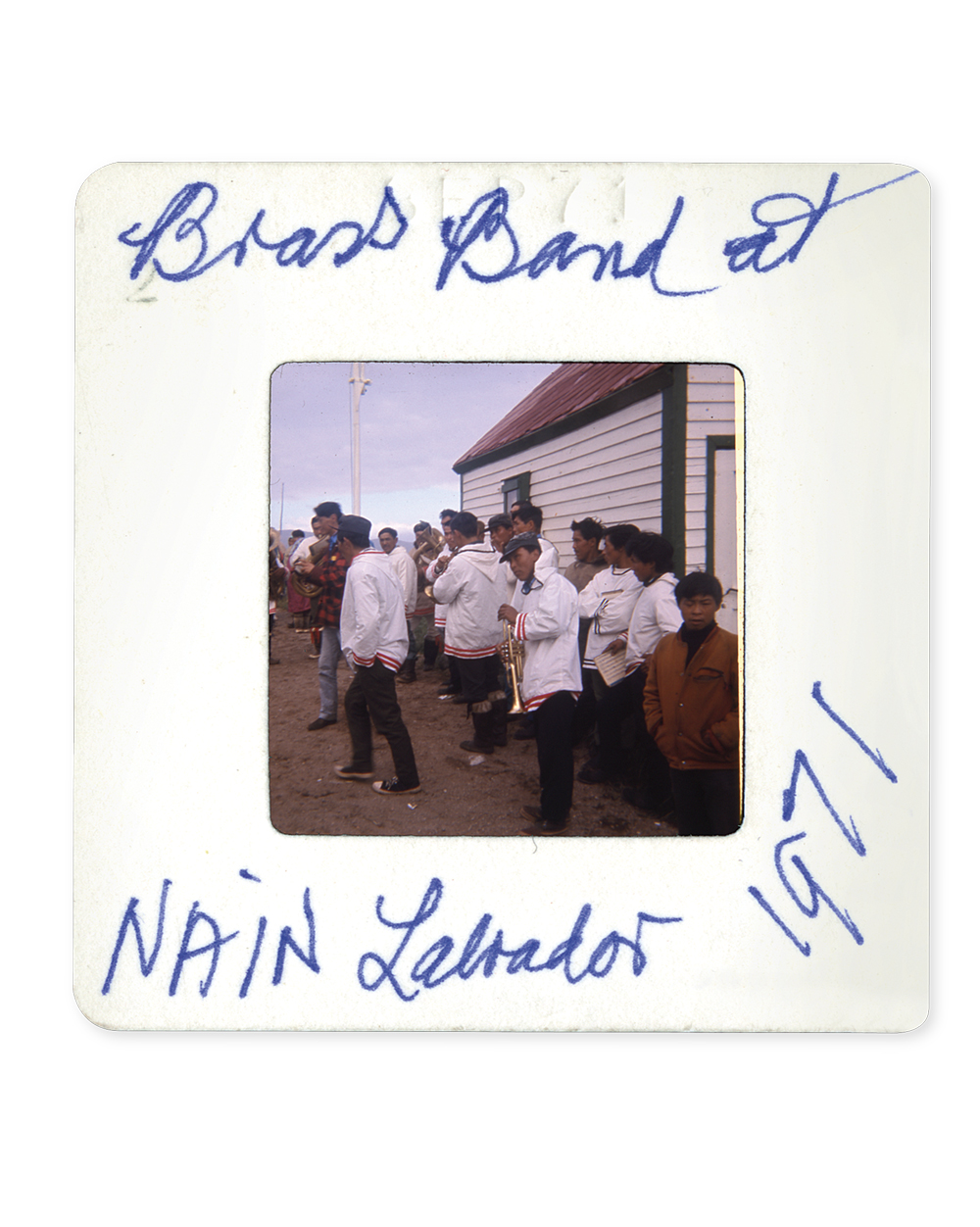
Edmunds learned about the Moravian missionaries, who, roughly 30 years after Messiah debuted, arrived in Labrador. The first Europeans to settle in the region—the last mission shut down in 2005—their influences on every aspect of Labradormiut life and culture continues to be monumental, including on local music.
In their zeal to colonize local Inuit, the sect of German-speaking Protestants taught Christian hymns and other sacred works by the likes of Mozart, Bach and Haydn. Over time, the two cultures’ languages and music began to form into its own unique entity: the Moravians brought organs, brass instruments, violins and other instruments to accompany the Inuit choirs who had mastered the complex choral arrangements and made them their own. In recent years, there has been a revival of Inuit community brass bands, which would call people to church and greet incoming ships.
“A lot of people think I studied classical music because of that unique music history from Labrador. But that’s not what happened,” Edmunds says. “I studied classical music because that was a passion of mine and something I love to do. It was only later in my life that I realized the wealth of music in my ancestry.”
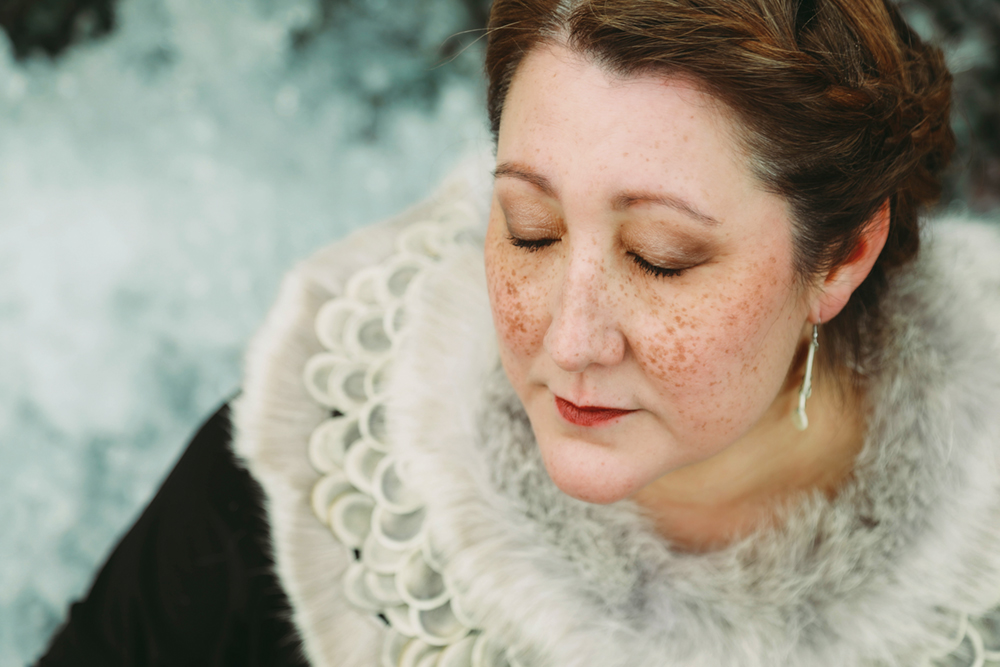
Gordon and Edmunds discussed the fact that most of this music had never been recorded; the result of which is the album, Pillorikput Inuit – Inuktitut Arias for All Seasons (2015), featuring 16 arias and duets performed by Edmunds, Karrie Obed and the Innismara Vocal Ensemble, accompanied by the Suncor Energy String Quartet and Gordon on the organ.
“I’m so grateful to have the opportunity to be able to record some of that music,” says Edmunds, who believes that collaborating with Gordon put her on the path to sharing and performing within this musical tradition. “Singing Mozart, Handel and Haydn in Inuttitut really made me feel like there were parts of myself coming together that I didn’t realize weren’t connected before. I felt like I was coming home and this is the music I was made to sing.”
It was a major revelation that would change Edmunds’ life. When she was starting out in her career, after studying music at Acadia University in Wolfville, NS, and Concordia University in Montreal, QC, people would quiz her: “What is Inuit opera?” She would have to explain, “No, I happen to be Inuk and I am a classical singer.” The next question would inevitably be whether or not she was also a throat singer.
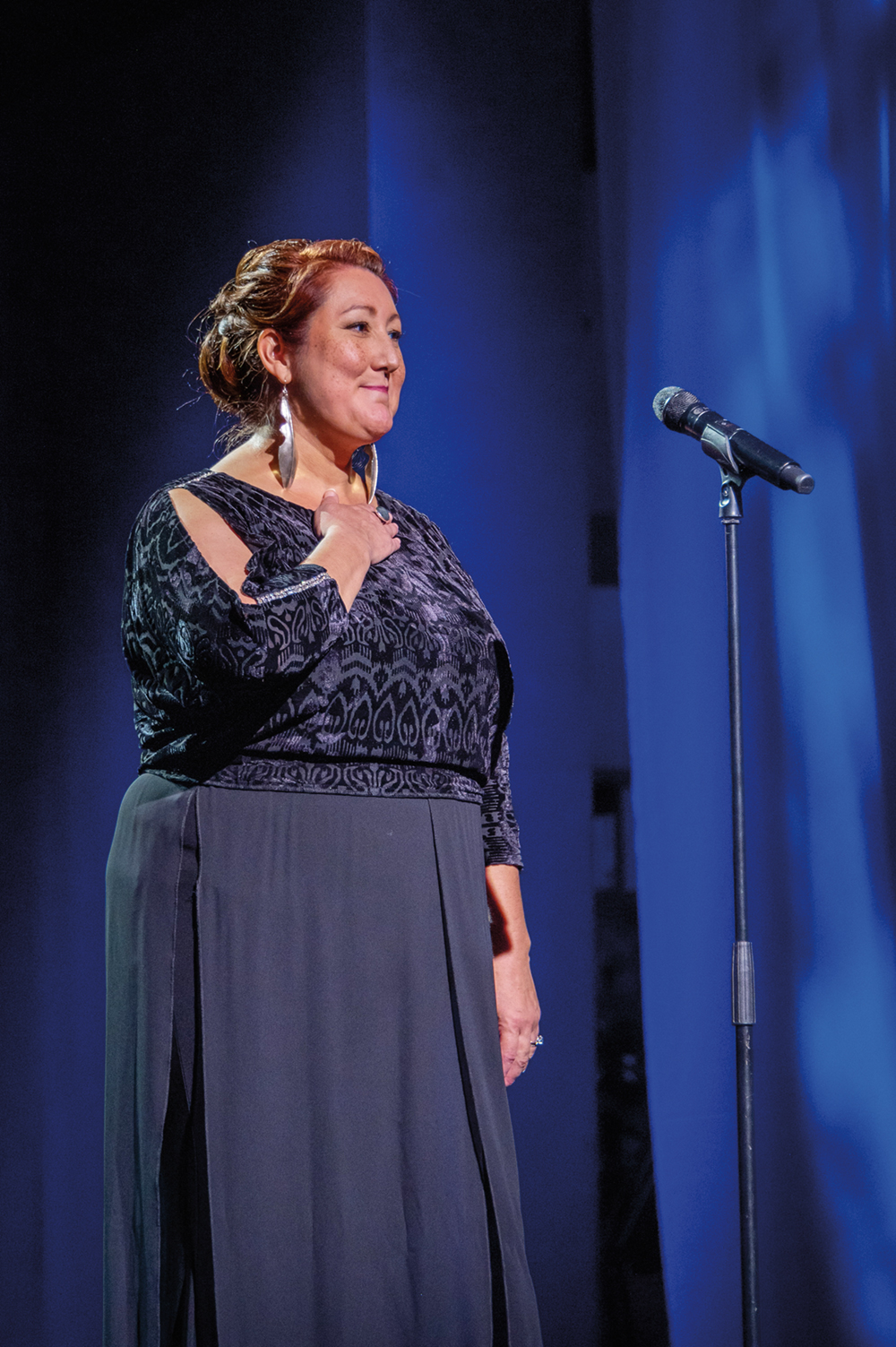
“I always felt like some people saw me as not enough of one thing, or too much of another. I struggled with that in my younger years, because I felt like people wanted to put me in some type of box,” Edmunds says. “I think with age and experience and maturity, and this incredible music history from Nunatsiavut, and those beautiful musical gems thatI get to share with audiences in Inuttitut—with all of that coming together, I really just decided, ‘Okay, this is who I am.’ I’m not going to worry about if it’s good enough to some people or what other people might think I should be doing, I’m just going to absolutely throw myself into doing what I love.”
This passion and commitment has guided Edmunds’ career and creative choices. In 2019, she performed in the world premieres of two Indigenous operas: Shanawdithit with Tapestry Opera/Opera on the Avalon, and the Cree and Sámi double-header, Two Odysseys: Pimootewin and Gállábártnit produced by Soundstreams, Signal Theatre and the Sámi National Theatre Beaivváš, which won a Dora Award for Outstanding Ensemble Work.
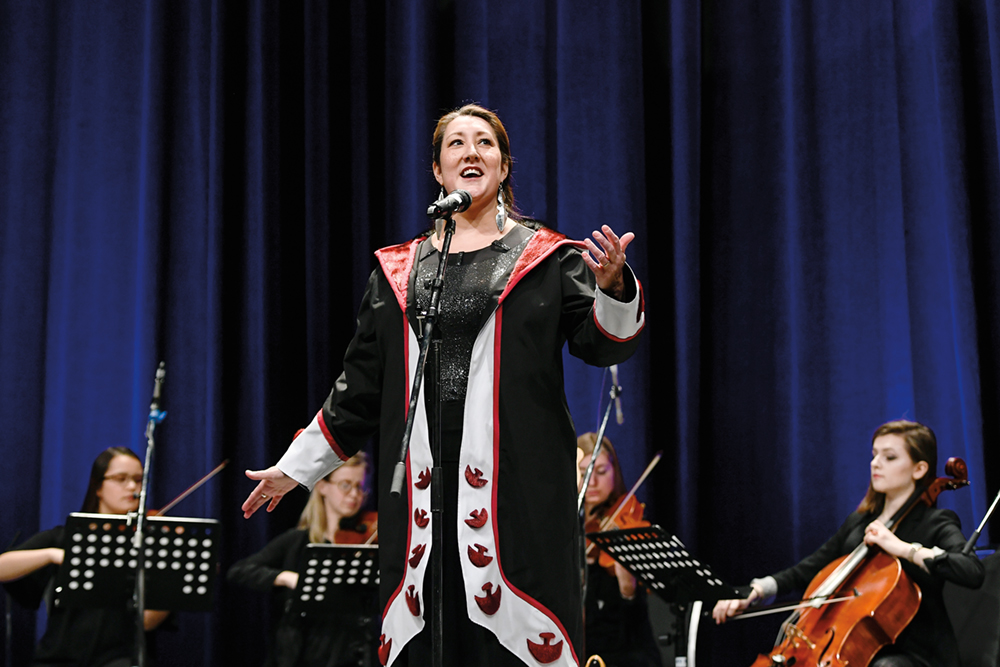
“Telling Indigenous stories through opera in Indigenous languages felt so incredible, and so different than performing, say, one of Mozart’s famous operas that’s been around for centuries,” Edmunds says. “Not that I don’t love traditional classical opera. But doing these new works, telling Indigenous stories through our voices, wow, it felt really powerful.”
Another life-changing moment for Edmunds happened in October 2021, when she was selected to perform at the Frankfurt Book Fair, the world’s largest and oldest book trade exhibition, in front of Mary Simon just months after Simon had been sworn in as the new Governor General of Canada, the first Inuk to hold the position.
“To be singing in Inuttitut and to see her right there in the audience, taking it in, it was so special,” Edmunds says. “There were people there from all over the world speaking lots of different languages, but knowing that she understood what I was singing, and to be able to share it on such a world stage, it was amazing.”
Legacy
Written in honour of Missing and Murdered Indigenous Women, Girls and 2-Spirit People.
You left us a legacy:
hold on to your history,
write a new plot,
dance, drum, do not forget
it’s never too late to rise and resonate!
Sister, I feel you walking with me.
I hear your voice on the breeze,
and I know that you will always be more than a memory…
alive, like the wind flying free. Atsunaingilagut.
While the world is opening back up and Edmunds is able to travel more for performances, she has two very personal creative projects on the go. She is in the middle of recording her third album, Connections, her first with all-original compositions. The nine songs, performed in Inuttitut and English, were arranged for string quartet, and feature throat singing by Jennie Williams and Ashley Dicker, which will be woven between each track. The album was recorded with the Atlantic String Quartet, a professional chamber ensemble comprised of principal string players from the Newfoundland and Labrador Symphony Orchestra.
Writing original lyrics is another way in which Edmunds is transforming perceptions around classical music and opera, by drawing on contemporary concerns. She is particularly proud of “Legacy,” a song written to commemorate Missing and Murdered Indigenous Women, Girls and 2-Spirit People.
“One of the things that I try to do through my work is have some purpose behind it,” she says. “Not just a pretty song, but to be able to bring about change in some way.”
Edmunds is also rethinking her response to those back when she was starting out, who asked her about “Inuit opera”—she has a new answer, now that she is writing one of her own. She’s just finished writing the libretto, and is ready to move into the translation and composition phase of Irngutaq (grandchild), which she hopes to premiere in the next few years.
Her dream for the production is to have representation from across Inuit Nunangat. One scene she is planning will feature traditional drum dancers and throat singers. “The typical audience that will go see a new opera might not encounter throat singing and drum dancing otherwise and see how magnificent and special it is,” says Edmunds. “If I’m going to tell a story that has to do with unique people and culture, I want to show off the beauty of these traditions.”
[1] All quotes Deantha Edmunds, interview with Sue Carter (Deputy Editor) April 2022
This Feature originally appeared in the Summer 2022 issue of the Inuit Art Quarterly.


